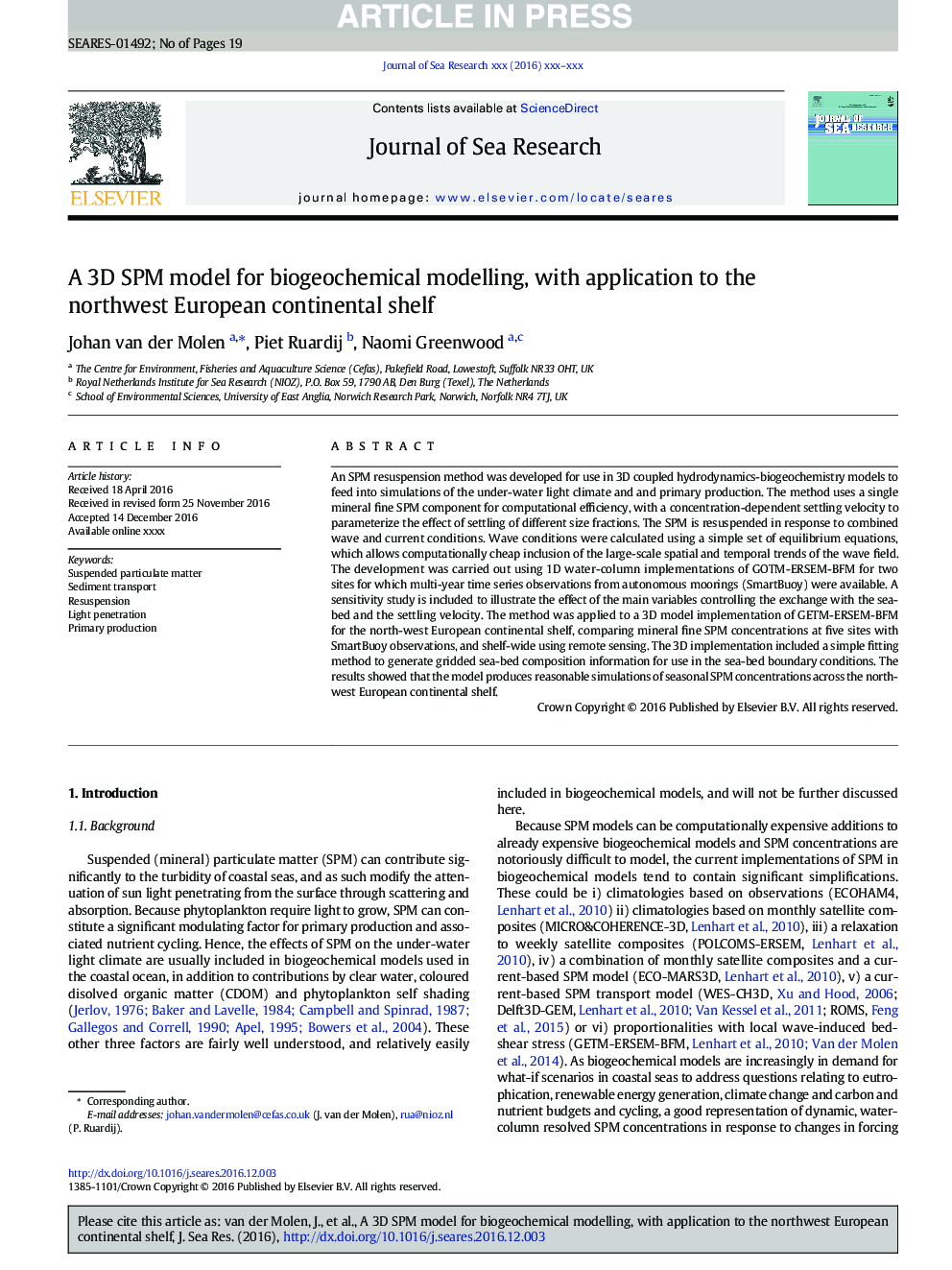| Article ID | Journal | Published Year | Pages | File Type |
|---|---|---|---|---|
| 5766093 | Journal of Sea Research | 2017 | 19 Pages |
Abstract
An SPM resuspension method was developed for use in 3D coupled hydrodynamics-biogeochemistry models to feed into simulations of the under-water light climate and and primary production. The method uses a single mineral fine SPM component for computational efficiency, with a concentration-dependent settling velocity to parameterize the effect of settling of different size fractions. The SPM is resuspended in response to combined wave and current conditions. Wave conditions were calculated using a simple set of equilibrium equations, which allows computationally cheap inclusion of the large-scale spatial and temporal trends of the wave field. The development was carried out using 1D water-column implementations of GOTM-ERSEM-BFM for two sites for which multi-year time series observations from autonomous moorings (SmartBuoy) were available. A sensitivity study is included to illustrate the effect of the main variables controlling the exchange with the sea-bed and the settling velocity. The method was applied to a 3D model implementation of GETM-ERSEM-BFM for the north-west European continental shelf, comparing mineral fine SPM concentrations at five sites with SmartBuoy observations, and shelf-wide using remote sensing. The 3D implementation included a simple fitting method to generate gridded sea-bed composition information for use in the sea-bed boundary conditions. The results showed that the model produces reasonable simulations of seasonal SPM concentrations across the northwest European continental shelf.
Keywords
Related Topics
Physical Sciences and Engineering
Earth and Planetary Sciences
Oceanography
Authors
Johan van der Molen, Piet Ruardij, Naomi Greenwood,
